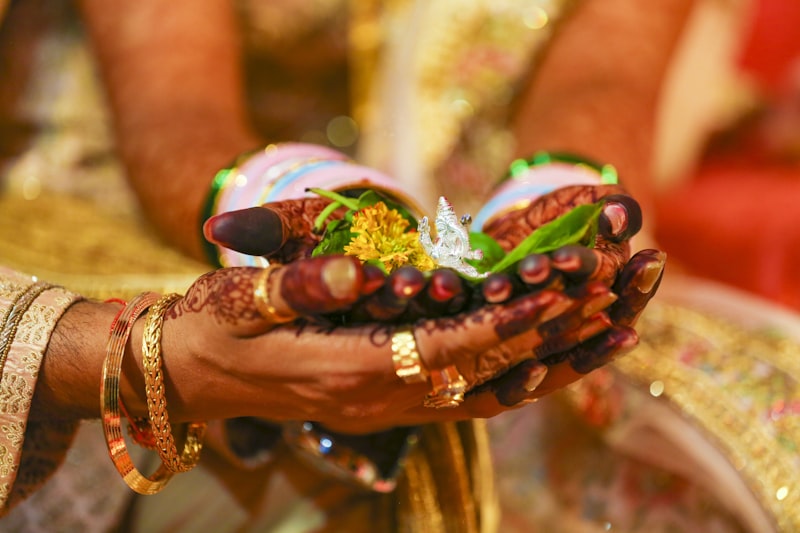The Evolution of Beading Styles in Wedding Fashion: A Journey Through Time
The Evolution of Beading Styles in Wedding Fashion: A Journey Through Time
Weddings are significant milestones in people's lives, and fashion plays a pivotal role in making these occasions memorable. One of the most exquisite ways to adorn wedding attires is through beading. The evolution of beading styles in wedding fashion reflects cultural shifts, technological advancements, and changing tastes. In this article, we will explore this captivating journey, detailing how beading styles have transitioned over the years and the factors that contributed to their developments.
A Historical Perspective on Beading in Wedding Fashion
Beading has a rich history that dates back thousands of years. From ancient civilizations to modern times, beads have been used to symbolize wealth, status, and beauty. In wedding fashion, beading serves not only as decoration but also as a form of expression. Let’s take a closer look at how beading has evolved over different periods:
| Period | Main Beading Styles | Materials Used | Cultural Significance |
| Ancient Civilizations | Simple stringing of natural beads | Wood, shells, stones | Wealth and protection |
| Middle Ages | Intricate embroidery with pearls | Pearls, gold threads | Symbol of purity |
| Victorian Era | Brocade fabrics with elaborate bead designs | Glass beads, sequins | Expression of sophistication |
| Modern Era | Minimalist styles with strategic beading | Rhinestones, crystals | Personalization and uniqueness |
The Influence of Cultural Traditions on Beading Styles
Throughout history, various cultures have contributed to the diversity of beading styles in wedding fashion. Different regions have their unique approaches, reflecting their customs and aesthetics. Here are a few notable examples:
Asian Influences
In many Asian cultures, intricate beadwork is a symbol of festivity and grandeur. Traditional wedding dresses often incorporate colorful beading patterns that tell stories or represent significant cultural symbols. For instance, in India, the intricate work known as 'zardozi' features gold threads and beads meticulously embroidered into wedding garments, showcasing craftsmanship and rich heritage.

European Elegance
European bridal fashion tends to favor elegance and simplicity, with beading styles often focusing on the use of pearls and crystals. In the Victorian Era, dresses were heavily adorned with various beading and lacework to express a sense of sophistication and high social status. The iconic royal wedding dresses continue to inspire brides, influencing contemporary beading designs.
Technological Advancements and Modern Beading Techniques
The 20th and 21st centuries have brought an explosion of innovation in the fashion industry, including beading techniques. With the advent of new technology, designers can create intricate patterns with precision. Here are a few modern beading techniques:
Laser Cutting and 3D Printing
Advancements in technology allow for laser-cutting techniques, providing cleaner edges and intricate designs that were once impossible to achieve by hand. 3D printing has opened up a new realm of possibilities for personalized beading accents that can be tailored to each bride's preferences.
Mixed Materials and Eco-Friendly Options
Modern wedding fashion increasingly focuses on sustainability. Designers are now incorporating eco-friendly materials and upcycled beads into their creations, offering unique styles while being mindful of environmental impact.
Notable Designers and Their Contributions
The world of wedding fashion has seen many designers who have influenced beading styles. Here are some notable figures:
Vera Wang
Vera Wang's bridal collections often feature delicate beadwork, emphasizing romantic and timeless designs. Her ability to merge traditional elements with modern aesthetics has inspired countless brides and designers alike.
Monique Lhuillier
Known for her intricate lace detailing and luxurious embellishments, Monique Lhuillier’s designs often showcase stunning beading work that highlights feminine silhouettes and modern elegance.
Bridal Trends: The Future of Beading in Wedding Fashion
The future of beading styles in wedding fashion holds exciting possibilities. As brides seek more personalized and sustainable options, we can expect to see the following trends:
Return to Tradition
A growing number of brides are gravitating towards nostalgic designs, opting for vintage-inspired beading styles that celebrate heritage and craftsmanship.
Interactive Beading
Bridal designs may evolve to include interactive beading elements—pieces that can be rearranged or modified, allowing brides to customize their looks throughout the wedding day.
Conclusion: Embracing the Evolution of Beading Styles
The evolution of beading styles in wedding fashion is a reflection of changing tastes, cultural influences, and technological advancements. As we look back at the historical journey of beading in weddings, it becomes clear how it has shaped personal expression and tradition. Whether leaning towards vintage elegance or modern minimalism, the important thing is for brides to choose styles that resonate with their unique story.
When planning a wedding, consider the following recommendations regarding beading styles: explore various cultural influences, embrace modern techniques, and, most importantly, select designs that make you feel beautiful and confident on your special day. The evolution of beading continues, beckoning brides to express their individuality while celebrating the rich history behind this traditional art form.
